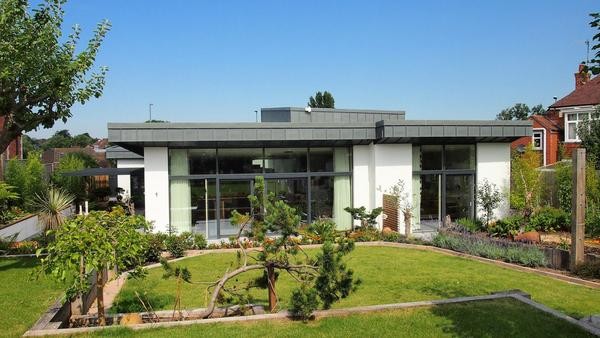SPECIFICATION GENERATOR
Find out which low impact materials are right for your building project.
Should I build a Passivhaus?
Find out more about our approach to this building scenario.

The real decision is whether you feel the additional expense, normally around 8-10% of the build cost, is worth it to have the most comfortable house you’ll ever own that requires virtually no heating.
Passivhaus is a very high building standard that ensures that (assuming you behave like most people) you’ll use less than 15kWh of heat energy per m2 of habitable space (e.g. not including space under cupboards/units, etc.) in the Passivhaus building.
The Passivhaus assessment tool (Passivhaus Planning Package, PHPP) assesses the design of the building to check whether it will meet the energy consumption requirements which instantly flags up problems with the design or construction methods before you get anywhere near a building site.
Once your design meets the energy requirements you simply have to build it. Many builders are fearful of building to this standard because it requires them to not only document the construction of many parts of the building but it also requires a fairly rigorous air tightness test. In reality, with a good design and diligent, thoughtful construction it is not difficult to meet the requirements and there are many new Passivhaus schemes under construction all the time.
For first timers one of the easiest ways to build to this standard is with timber frame and wood fibre insulation, using OSB on the inner face as the airtightness and vapour control layers. This can be air-tested at a very early stage and any leakages stopped well before anything is covered or un-reachable.
It is perfectly possible to use masonry to construct a Passivhaus building (the standard does not dictate what type of material should be used) but the internal plaster is normally used for the airtightness layer and once the walls are plastered any air leaks can be much more difficult to fix.
Finally, the Passivhaus standard can help you to create buildings which are wonderfully sustainable in their running but it does not address the energy used to create the building in the first place. It is still up to you to use materials which are sustainably sourced and produced if you want to create a truly sustainable home.
WHAT’S NEXT?
If you want to find out more about how to effectively manage your sustainable building project, check out The Self-Build Series. This series of guides has been put together to you understand sustainable construction. We hope you find them useful!